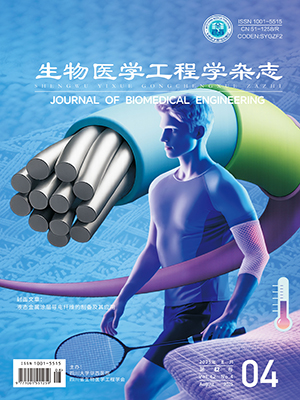| 1. |
Vaughan T M, Heetderks W J, Trejo L J, et al. Brain-computer interface technology: a review of the Second International Meeting. IEEE Trans Neural Syst Rehabil Eng, 2003, 11(2): 94-109.
|
| 2. |
伏云发, 郭衍龙, 张夏冰. 脑-机接口—革命性的人机交互. 北京: 国防工业出版社, 2020.
|
| 3. |
刘艳鹏, 龚安民, 丁鹏, 等. 基于言语想象的脑机交互关键技术. 生物医学工程学杂志, 2022, 39(3): 596-611.
|
| 4. |
Anumanchipalli G K, Chartier J, Chang E F. Speech synthesis from neural decoding of spoken sentences. Nature, 2019, 568(7753): 493-498.
|
| 5. |
Riaz A, Akhtar S, Iftikhar S, et al. Inter comparison of classification techniques for vowel speech imagery using EEG sensors// The 2014 2nd International Conference on Systems and Informatics (ICSAI 2014). Shanghai: IEEE, 2014: 712-717.
|
| 6. |
Zhang H, Guo Z, Chen F. The effects of different brain regions on fNIRS-based task-state detection in speech imagery// 2023 45th Annual International Conference of the IEEE Engineering in Medicine & Biology Society (EMBC). Sydney: IEEE, 2023: 1-4.
|
| 7. |
Panachakel J T, Ramakrishnan A G. Decoding covert speech from EEG-a comprehensive review. Front Neurosci, 2021, 15: 642251.
|
| 8. |
Van Gerven M, Farquhar J, Schaefer R, et al. The brain–computer interface cycle. J Neural Eng, 2009, 6(4): 041001.
|
| 9. |
Lee S H, Lee Y E, Lee S W. Toward imagined speech based smart communication system: potential applications on metaverse conditions// 2022 10th International Winter Conference on Brain-Computer Interface (BCI). Gangwon-do: IEEE, 2022: 1-4.
|
| 10. |
阮盛捷, 谢宏. 基于功能近红外信号的脑机接口(BCI)在肌萎缩性侧索硬化症(ALS)患者交流中的研究. 现代计算机(专业版), 2018(17): 3-7.
|
| 11. |
Bisla M, Anand R S. Analysis of imagined speech characteristics using phase-based connectivity measures// 2023 IEEE 13th International Conference on Control System, Computing and Engineering (ICCSCE). Penang: IEEE, 2023: 68-73.
|
| 12. |
郭苗苗, 齐志光, 王磊, 等. 语言脑机接口康复系统中的参数优化研究. 信号处理, 2018, 34(8): 974-983.
|
| 13. |
Blankertz B, Tomioka R, Lemm S, et al. Optimizing spatial filters for robust EEG single-trial analysis. IEEE Signal Process Mag, 2007, 25(1): 41-56.
|
| 14. |
Wang X, Lai Y H, Chen F. Intended speech classification with EEG signals based on a temporal attention mechanism: A study of mandarin vowels// 2024 46th Annual International Conference of the IEEE Engineering in Medicine and Biology Society (EMBC). Orlando: IEEE, 2024: 1-4.
|
| 15. |
Zhang Z, Ding X, Bao Y, et al. Chisco: An EEG-based BCI dataset for decoding of imagined speech. Sci Data, 2024, 11(1): 1265.
|
| 16. |
Lawhern V J, Solon A J, Waytowich N R, et al. EEGNet: a compact convolutional neural network for EEG-based brain–computer interfaces. J Neural Eng, 2018, 15(5): 056013.
|
| 17. |
Schirrmeister R T, Springenberg J T, Fiederer L D J, et al. Deep learning with convolutional neural networks for EEG decoding and visualization. Hum Brain Mapp, 2017, 38(11): 5391-5420.
|
| 18. |
Hermosilla D M, Codorniú R T, Baracaldo R L, et al. Shallow convolutional network excel for classifying motor imagery EEG in BCI applications. IEEE Access, 2021, 9: 98275-98286.
|
| 19. |
Ding Y, Robinson N, Zhang S, et al. TSception: Capturing temporal dynamics and spatial asymmetry from EEG for emotion recognition. IEEE Trans Affect Comput, 2022, 14(3): 2238-2250.
|
| 20. |
Krishna G, Tran C, Han Y, et al. Speech synthesis using EEG// ICASSP 2020-2020 IEEE International Conference on Acoustics, Speech and Signal Processing (ICASSP). Barcelona: IEEE, 2020: 1235-1238.
|
| 21. |
Lotte F, Brumberg J S, Brunner P, et al. Electrocorticographic representations of segmental features in continuous speech. Front Hum Neurosci, 2015, 9: 97.
|
| 22. |
Bocquelet F, Hueber T, Girin L, et al. Key considerations in designing a speech brain-computer interface. J Physiol Paris, 2016, 110(4): 392-401.
|
| 23. |
Ang K K, Chin Z Y, Zhang H, et al. Filter bank common spatial pattern (FBCSP) in brain-computer interface// 2008 IEEE International Joint Conference on Neural Networks (IEEE World Congress on Computational Intelligence). Hong Kong: IEEE, 2008: 2390-2397.
|




